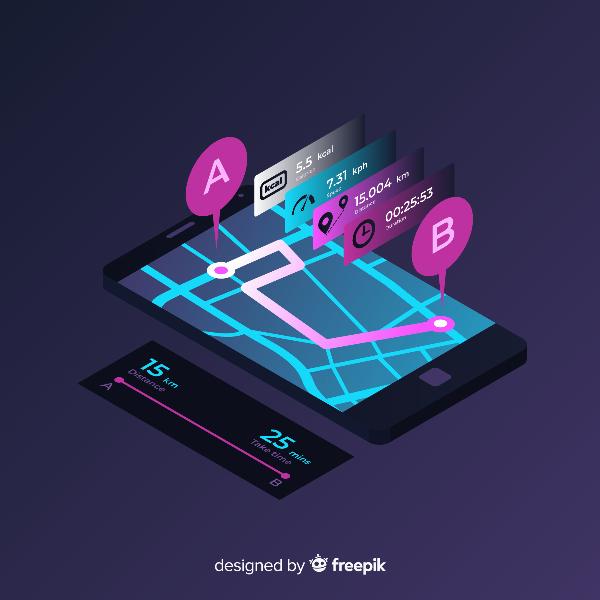How to Develop a Route Planner App: Features, Costs, and Development Tips

Strong 8k brings an ultra-HD IPTV experience to your living room and your pocket.
In today’s fast-paced world, efficient route planning has become essential for businesses and individuals alike. A route planner app can significantly improve logistics, reduce travel time, and enhance overall efficiency. Whether you're a startup looking to enter the market or an established business aiming to optimize your operations, developing a route planner app can be a game-changer. This article explores the key features, costs, and development tips for creating a successful route planner app.
Key Features of a Route Planner App
When developing a route planner app, incorporating essential features ensures it meets user needs and stands out in a competitive market. Here are some critical features to consider:
1. User Registration and Profile Management
User Registration: Allow users to sign up using email, phone number, or social media accounts.
Profile Management: Enable users to manage their profiles, update personal information, and set preferences.
2. Map Integration
Real-Time Maps: Integrate with map services like Google Maps, Apple Maps, or OpenStreetMap to provide accurate and up-to-date maps.
Route Display: Display routes on the map with clear directions and waypoints.
3. Route Optimization
Multiple Stops: Allow users to add multiple stops to their routes.
Optimization Algorithms: Implement algorithms to calculate the most efficient routes based on factors like distance, traffic, and road conditions.
4. Turn-by-Turn Navigation
Voice Guidance: Provide turn-by-turn voice navigation to guide users along their routes.
Visual Instructions: Display visual instructions and route details on the screen.
5. Real-Time Traffic Updates
Traffic Data: Integrate real-time traffic data to help users avoid congestion and delays.
Alternate Routes: Suggest alternate routes based on current traffic conditions.
6. Offline Mode
Offline Maps: Allow users to download maps and routes for offline use.
Offline Navigation: Provide navigation features even when users are not connected to the internet.
7. Geofencing
Geofencing Alerts: Notify users when they enter or leave predefined geographic areas.
Customizable Zones: Allow users to create and manage custom geofencing zones.
8. Integration with Other Services
Calendar Integration: Sync with calendars to plan routes based on scheduled events.
Ride-Sharing Integration: Integrate with ride-sharing services like Uber or Lyft for seamless transportation options.
9. Analytics and Reporting
Usage Statistics: Provide users with insights into their travel habits and route efficiency.
Reports: Generate reports for businesses to analyze and optimize their logistics operations.
10. User Feedback and Support
Feedback System: Allow users to provide feedback and rate the app.
Customer Support: Offer in-app customer support for assistance and troubleshooting.
Route Planner App Development Cost
The cost of developing a route planner app can vary widely depending on several factors. Here are some key cost determinants:
1. App Complexity
Basic Features: A basic app with essential features like map integration, route optimization, and turn-by-turn navigation may cost between $20,000 to $50,000.
Advanced Features: Adding advanced features like real-time traffic updates, offline mode, geofencing, and integration with other services can increase the cost to $50,000 to $100,000 or more.
2. Platform
Single Platform: Developing for a single platform (iOS or Android) will be less expensive than developing for both. A single platform app may cost between $20,000 to $60,000.
Cross-Platform: Developing a cross-platform app that works on both iOS and Android can range from $40,000 to $120,000.
3. Design
UI/UX Design: Investing in a high-quality user interface (UI) and user experience (UX) design is crucial for the app’s success. Design costs can range from $5,000 to $20,000 depending on complexity and quality.
4. Development Team
In-House vs. Outsourcing: Hiring an in-house development team can be more expensive than outsourcing to a development agency or freelancers. Outsourcing can reduce costs significantly.
Team Composition: The cost will also depend on the team’s composition, including developers, designers, project managers, and quality assurance testers.
5. Maintenance and Updates
Ongoing Costs: Regular maintenance, updates, and support are essential for the app’s longevity and performance. Annual maintenance costs can be 15% to 20% of the initial development cost.
6. Third-Party Services
API Integrations: Costs for integrating third-party services like map APIs, traffic data providers, and ride-sharing services should be considered. These can include setup fees and ongoing subscription costs.
Development Tips for a Successful Route Planner App
Creating a successful route planner app requires careful planning and execution. Here are some development tips to guide you through the process:
1. Conduct Market Research
Identify Target Audience: Understand who your users are, their needs, and preferences.
Analyze Competitors: Study existing route planner apps to identify strengths, weaknesses, and market gaps.
2. Define Clear Objectives
Set Goals: Define what you want to achieve with your app, such as improving logistics efficiency or providing better navigation solutions.
Prioritize Features: Determine which features are essential for your app’s success and prioritize them during development.
3. Choose the Right Technology Stack
Scalability: Select technologies that allow your app to scale as your user base grows.
Performance: Ensure the chosen technology stack provides high performance and reliability.
4. Focus on User Experience
Simple Interface: Design an intuitive and user-friendly interface that makes navigation easy.
Smooth Navigation: Ensure smooth and accurate navigation, with clear instructions and minimal disruptions.
5. Test Thoroughly
Beta Testing: Conduct extensive beta testing with real users to identify and fix issues.
Performance Testing: Test the app’s performance under different conditions to ensure reliability.
6. Plan for Continuous Improvement
User Feedback: Collect user feedback and use it to improve the app continuously.
Regular Updates: Release regular updates to add new features, fix bugs, and improve performance.
7. Consider Monetization Strategies
Freemium Model: Offer basic features for free and charge for advanced features.
In-App Advertising: Incorporate ads to generate revenue without charging users directly.
8. Ensure Compliance with Regulations
Data Privacy: Ensure your app complies with data privacy regulations such as GDPR or CCPA.
Navigation Laws: Make sure the app adheres to any relevant navigation and traffic laws.
Conclusion
Developing a route planner app can offer significant benefits for both businesses and individuals by optimizing routes, reducing travel time, and enhancing efficiency. By focusing on essential features, carefully planning the development process, and considering the associated costs, you can create a successful route planner app. With thorough market research, a clear understanding of your target audience, and a commitment to continuous improvement, your route planner app can stand out in the competitive market and provide valuable services to its users.
Note: IndiBlogHub features both user-submitted and editorial content. We do not verify third-party contributions. Read our Disclaimer and Privacy Policyfor details.


